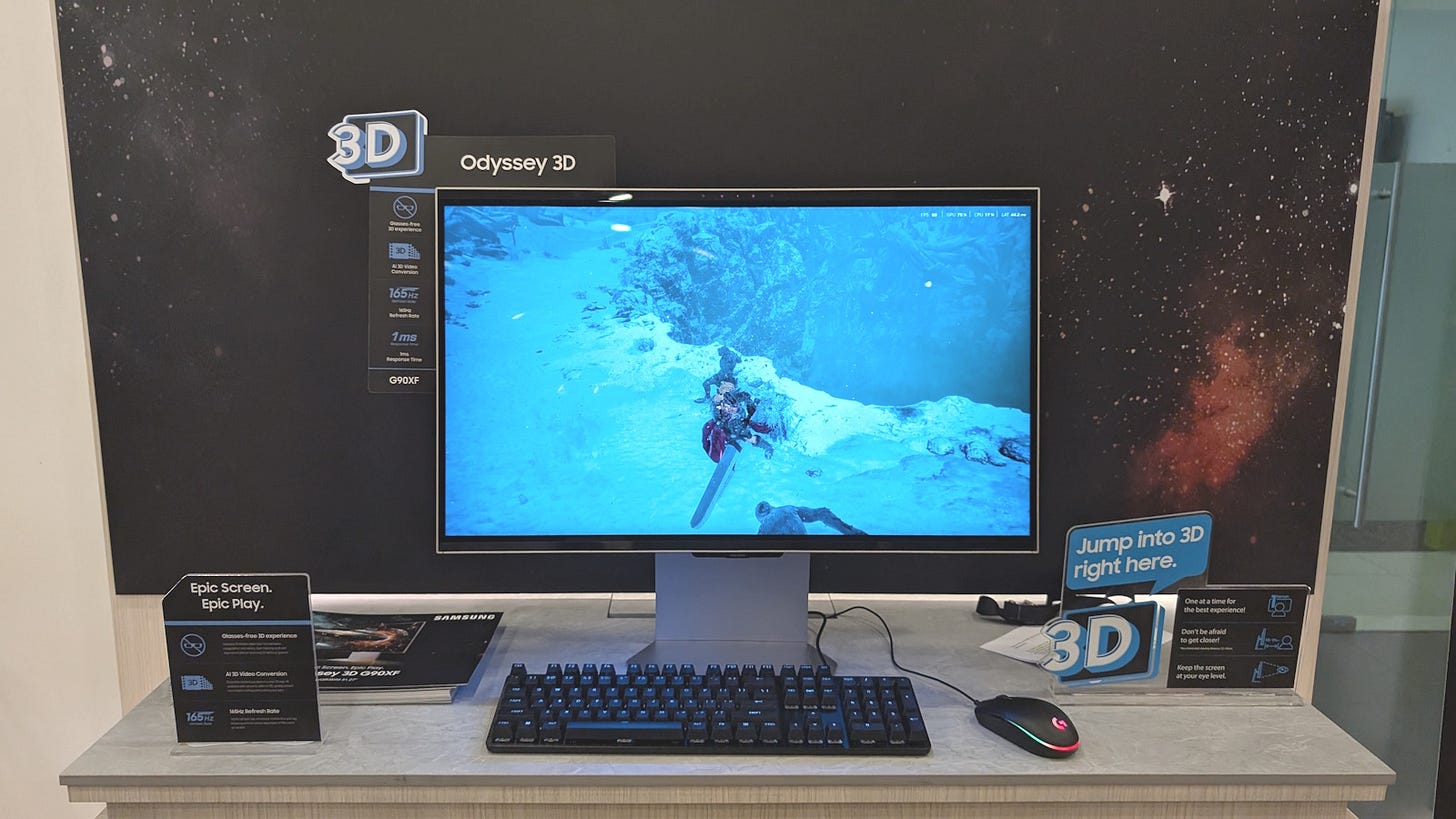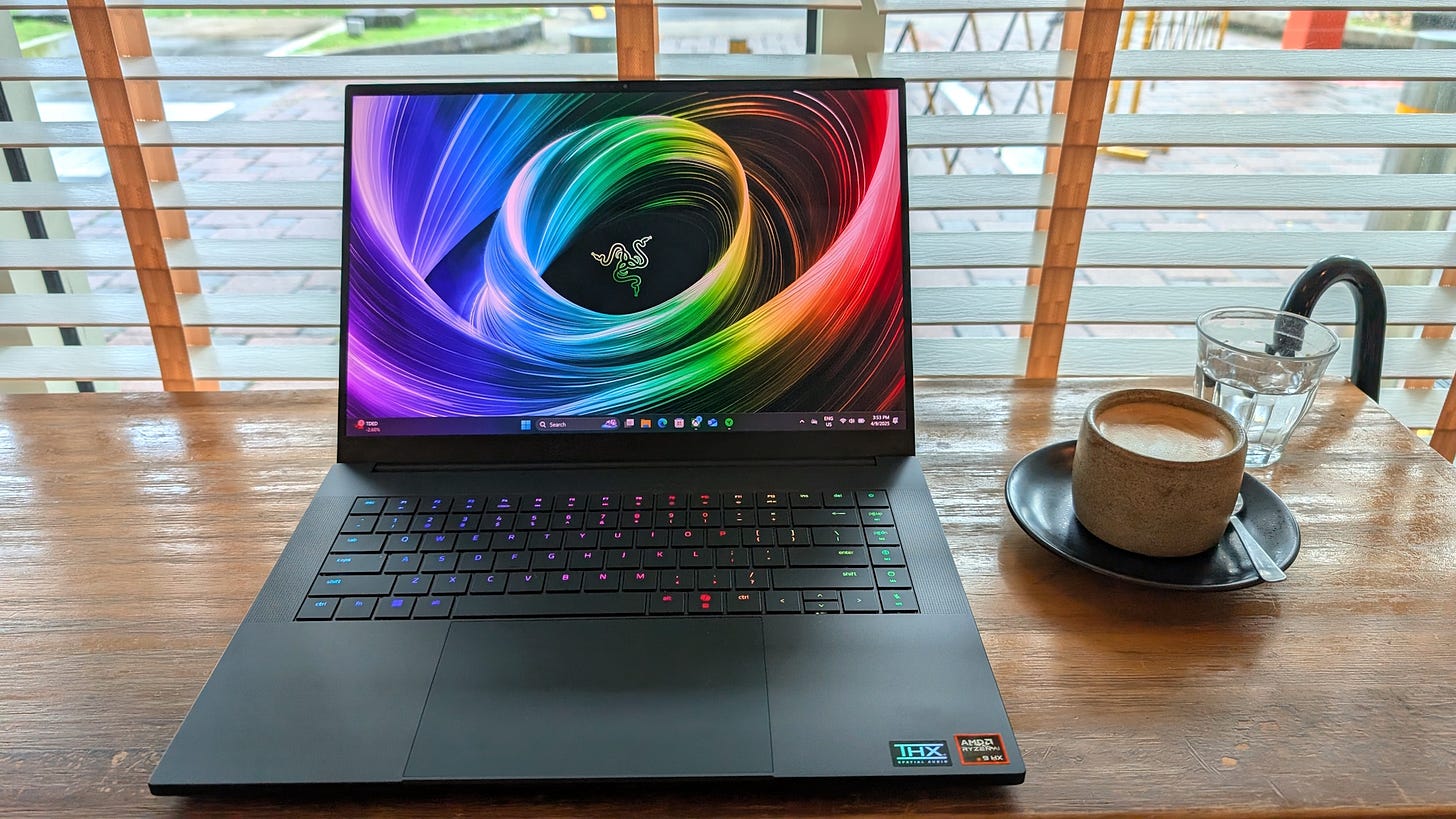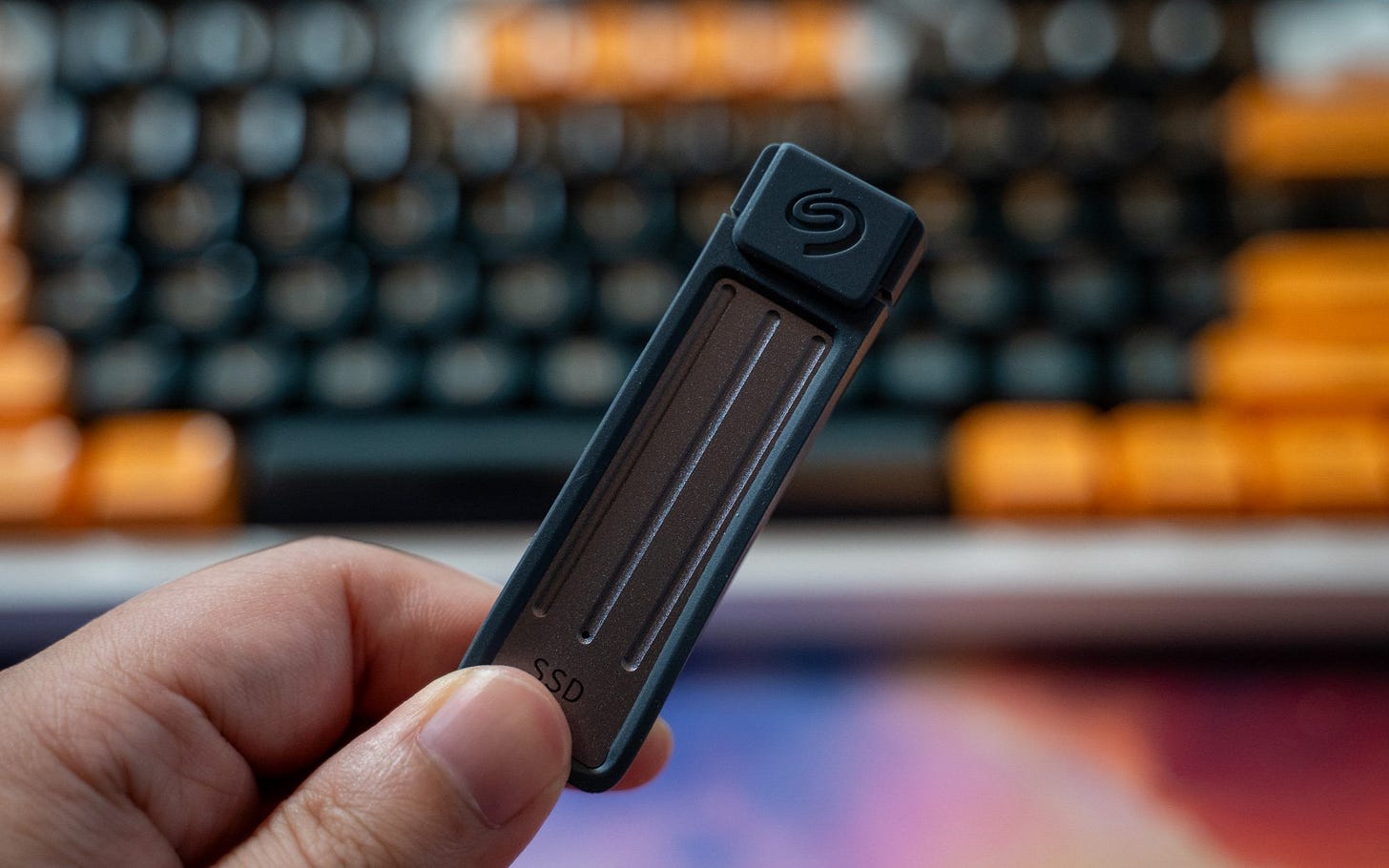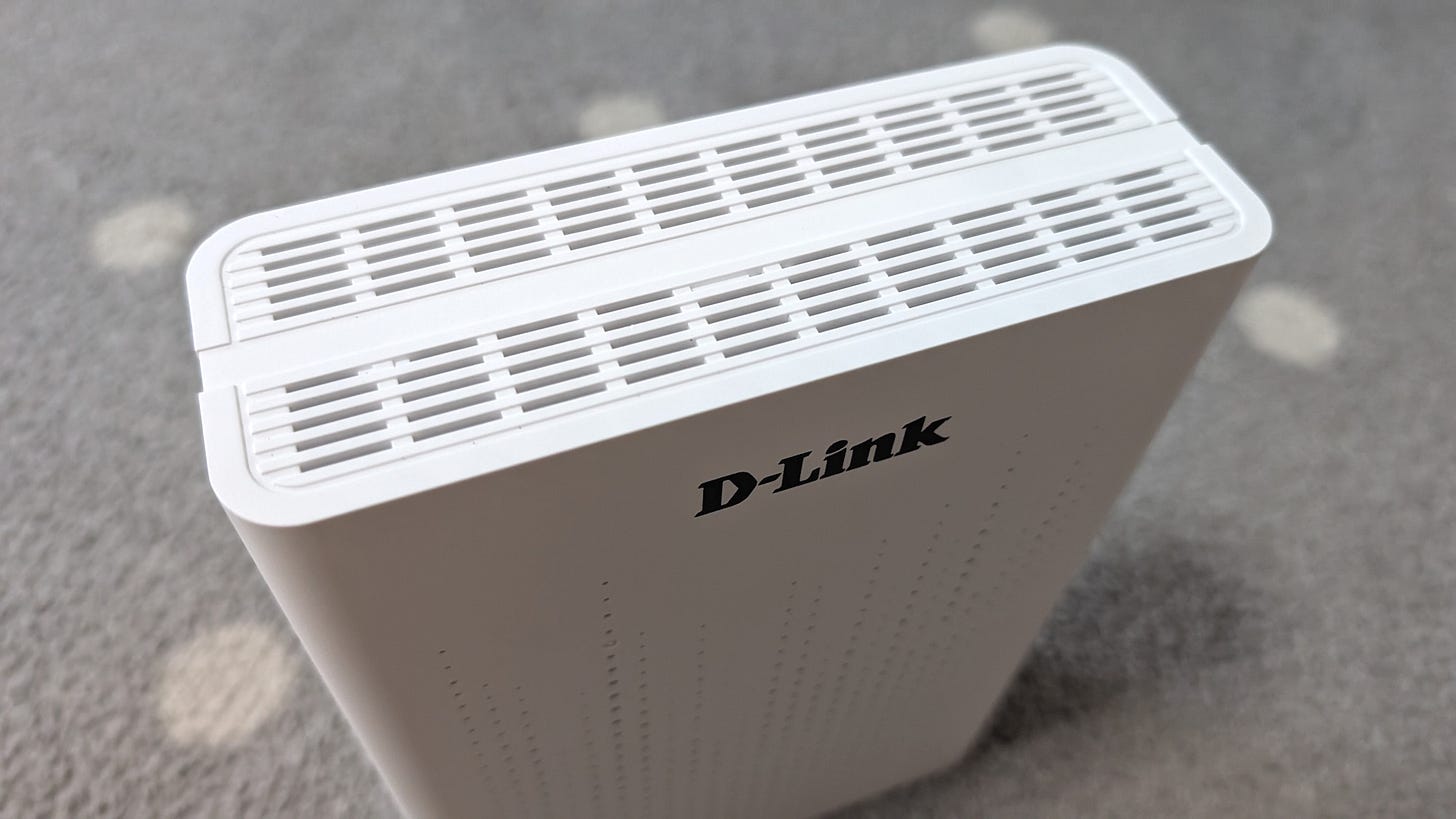The new 3D is personal
Samsung Odyssey 3D brings back the 3D experience for movies and games
The last time I watched a 3D movie — Gravity, starring Sandra Bullock and George Clooney — in an IMAX theatre was over a decade ago. It was a memorable experience, during the heyday of theatrical 3D. But just a few years later, the format was basically dead, likely due to a combination of requiring 3D glasses, and poorly executed 3D movies. With the exception of James Cameron, that is. 2022’s Avatar: The Way of Water was quite the spectacle, and the third Avatar movie (in 3D, of course) is slated for December.
But 3D is now making a comeback on the small screen. And it all started, strangely enough, with VR headsets like the Apple Vision Pro. Not only can these headsets show 3D content, along with spatial audio, they effectively shut out the world, making for an immersive experience. There’s a decent amount of content, too. And you can also create your own 3D content for the Vision Pro with the iPhone 15 Pro or newer.
It’s not just VR headsets, though. Glass-free 3D monitor prototypes were shown at last year’s CES. And they are here now in the form of the 27-inch Samsung Odyssey 3D. This 4K monitor uses cameras at the top of the screen to track your eyes, and then creates the 3D effect with lenticular lens.
And the 3D effect is certainly convincing, at least for me. At a recent launch event for the Samsung Odyssey 3D, I was able to watch 3D video content, and even a 3D version of The First Berserker: Khazan, an action RPG. I was especially impressed with the game, which exhibited a real sense of depth in 3D. The game characters popped out, while visual effects like snow and blood spatters felt more real. In fact, it felt like playing a VR game, except being slightly less immersive (but also less fatiguing). And just like in VR games, images looked grainy.
The experience is also very personal. There’s a sweet spot for the 3D effect. When I watched the display from the sides — with another person using the monitor — the 3D effect was off, and the visuals just seemed weird.
More importantly — given the scarcity of native 3D content — the Samsung Odyssey 3D can convert 2D video content into 3D. But there are a couple of caveats here. For starters, you’ll need a beefy PC with an Nvidia GeForce graphics card (RTX 3080 or better) running Samsung’s Reality Hub app. The conversion also doesn’t work for DRM content (alas, no 3D Netflix movies), and when HDR mode is enabled. The Nvidia GPU requirement also rules out game consoles like the PlayStation 5.
However, there’s currently limited support for games that work with the Odyssey 3D. So far, Samsung has partnered with several game developers such as Nexon (The First Berserker: Khazan), Neowiz (Lies of P: Overture) and Hoyoverse (Genshin Impact). The company says partner developers will have an “unprecedented level of control over the 3D effects produced with Odyssey 3D”. It’s fair to say Samsung needs a lot more developers on its side if the Odyssey 3D is to succeed.
There’s also a steep price to pay for this 3D monitor. The Samsung Odyssey 3D costs S$2,988 in Singapore. If you preorder before April 21, it’s S$2,788, and you’ll also get The First Berserker: Khazan full game, a 1TB portable SSD, and a gaming mat. We’ll be testing it soon, so stay tuned for the full review.
In our latest reviews, we checked out Razer’s new slim gaming laptop, which packs the latest GeForce RTX 5090 graphics, a compact and portable SSD from Seagate, and D-Link’s affordable Wi-Fi 7 router.
The latest Razer Blade 16 is not only slimmer than the previous version, but it packs even more powerful hardware in the form of Nvidia’s latest GeForce RTX 5090 graphics. It also runs slightly cooler, though the notebook is still too warm to place on your lap. But if you want the best, be prepared to pay S$5,499.
The Seagate Ultra Compact SSD looks like a flash drive, but its compact body houses a solid state drive (up to 2TB) that offers 1,000MB/s read and write speeds. It’s obviously far from the fastest SSD, but it does have IP54 water and dust resistance, and comes with a three-year subscription of Seagate’s Rescue Data Recovery Service.
From what I can tell, the D-Link BE7200 is the most affordable Wi-Fi 7 router with two 10Gbps Ethernet ports at S$179. You’ll want this if you’re planning to maximise a 10Gbps broadband fibre plan. However, it only offers a web-based interface that’s very “old school”, and is currently exclusive to those who subscribe to local ISP Simba.





